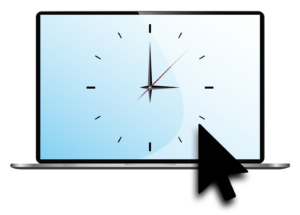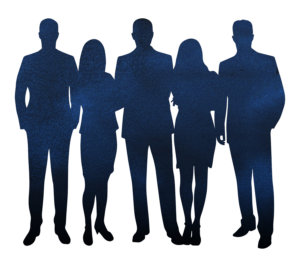
The average person forms an opinion of a website in less than one second according to a Stanford research project. That’s science, baby! Canadian researchers clocked opinion reactions even faster, at 1/20th of a second. But the more important statistic is this: 75% of users judge a company’s credibility based on its website. Let’s drill into some numbers, then we’ll talk about how we can help.
- 50 milliseconds (1/2 second) is how long it takes a person to form an opinion of your website. The human body’s sensory organs send messages to the brain in just 20 milliseconds, so people are forming an opinion virtually immediately when visiting a website.
- 94% of people’s first opinion of a website is based on design.
It’s worth asking, “What do people see when they go to my site?”
- 38% of people log off a website if content or layout is unattractive.
- 5.6 seconds is the average time people spend reading the words on a website.
- 85% of people say the smartphone version of a company’s website should be as good or better than its desktop version.
“Is my website keeping up with consumer behavior?”
- 57% of people would not recommend a business that has a site poorly designed for smartphones.
- 88% of people are less likely to return to a website where they had a bad experience.
Today’s website functions the way a downtown brick-and-mortar store used to: It’s where people interact with your organization. Regardless of whether you depend on your website to sell products, generate positive opinion of your brand or simply serve as a source of information, your site is the platform everyone from employees and lawmakers to customers and the general public uses to hear what you have to say. The good news is there’s no middleman: You are in full control, communicating directly with your listener.
The advantages of a team

“A good website establishes or increases confidence in your organization,” says MSI Senior Web Developer Bryan Meshke. “It’s the place people go to ‘meet’ you and decide whether or not to continue the conversation, not unlike how we form an opinion of another person at a business meeting or job interview. Are they put together and smiling confidently, offering a firm handshake? Or do they clearly not care?
“Yet, a website has a lifespan like dog years: it ages quickly. The good news is you can make your site new and fresh and exciting again over and over. A proper web team is the fountain of youth for your company’s public appearance.”
There are two primary advantages MSI delivers to our clients. Number one is the high quality of our work, stemming from the sheer talent of people we actively seek out and recruit. And number two, MSI is a full-service agency, shepherding each site from concept to buildout to launch and, for many years after, maintenance, redesigns/updates, and security.
The broader talent advantage is that every other person on the MSI team is a specialist in a different field of communications, providing a 3D scope of support that is rare among single-function firms. Bryan points out that a petroleum engineer doesn’t know how to change drill pipe or operate a pumpjack.
“Typically, a website designer is like the engineer,” says Bryan. “They do the big-picture part of technicals, then subcontracts people to do all the other parts, like graphic design and photography. Or he passes it all off for the client to do. The MSI difference is we have the entire team working with each other.”
MSI Web Developer Cassandra Cosio tells us, “Anytime I want, I can turn to my teammates writing copy for a site’s SEO or doing performance analysis and say, ‘Hey, can you step over to my computer and look at this?’ Our system of multiple subject-matter experts all focused on your site and each bringing his or her own skillset to the table is a strength that puts our clients’ sites way out ahead of others’.”
Have goals. Achieve goals:
The advantage of premium design

Website design is 100% about providing the best customer experience.
Companies continually change or upgrade their sites, so it’s important to keep pace with what competitors are doing or risk appearing obsolete, in the same way a cellphone from years ago would seem rudimentary compared with a new smartphone. Good website design begins with a first impression alerting the visitor that the company is interesting, innovative and cares enough to keep its site new and relevant to what’s happening in the world, both in web technology and current events.
For a simple example, most premium sites now feature dynamic visuals, either a short video or great photos that scroll from one to another. A site dominated by one photo or blocks of copy stands out as tone deaf or neglected, which leads to a visitor’s subliminal opinion that the company behind the site doesn’t care about quality, its image, or me as a customer. And if the company doesn’t care about those things, how much do they care about their work or product?
The website also makes a clear statement that the company understands what is happening and how that affects customers, site visitors and, simply, the world. For example, during a devastating hurricane, a Florida tourism company’s website would not feature happy, smiling people touting a “Come visit” message. It would pivot to a message about caring for our community, at the very least on its homepage. This inspires confidence that the company is competent and responsive.
Your website serves (or should) as an integrated anchor of a multi-channel communications effort, with social/organic media, paid advertising, earned media, corporate activities (such as public appearances by senior leaders), etc. Smart, creative design that is regularly updated with fresh imagery, layout, topics, language and more alert users, even if they are first-time visitors, that your company is actively engaged in staying at the leading edge of industry or sector advancements by always making improvements and – through doing so – that you care about the customer experience on your site.
Because every company and nonprofit has a different purpose in the market, websites should be tailored to best provide what their unique customers or clients want. Visitors to a clothing company’s retail site have very different needs and expectations than do visitors to an Alaska Native corporation’s site.
“MSI provides custom solutions with crazy functionality for each client,” says MSI’s Cassandra. “And we also empower our clients to keep their sites fresh and leading their competitors by going to them, in person, to train their staff how to get into the back-end or make updates. Many clients simply want to be able to change photos or post stories themselves, and some have a time factor where they need to be able to make an instant update or change. We train them how to do that while also protecting the site’s security and design integrity.”
The advantage of smart tracking
Understanding how people use or don’t use your website empowers us to improve virtually every aspect of what you want your website to do. Monitoring a site with both human protocols and automated tools allows us to strengthen user loyalty through optimized platform performance and reach potential new users by tailoring messages for specific demographics, choosing the most effective channels, increasing your site’s appearance on web searches, and more.